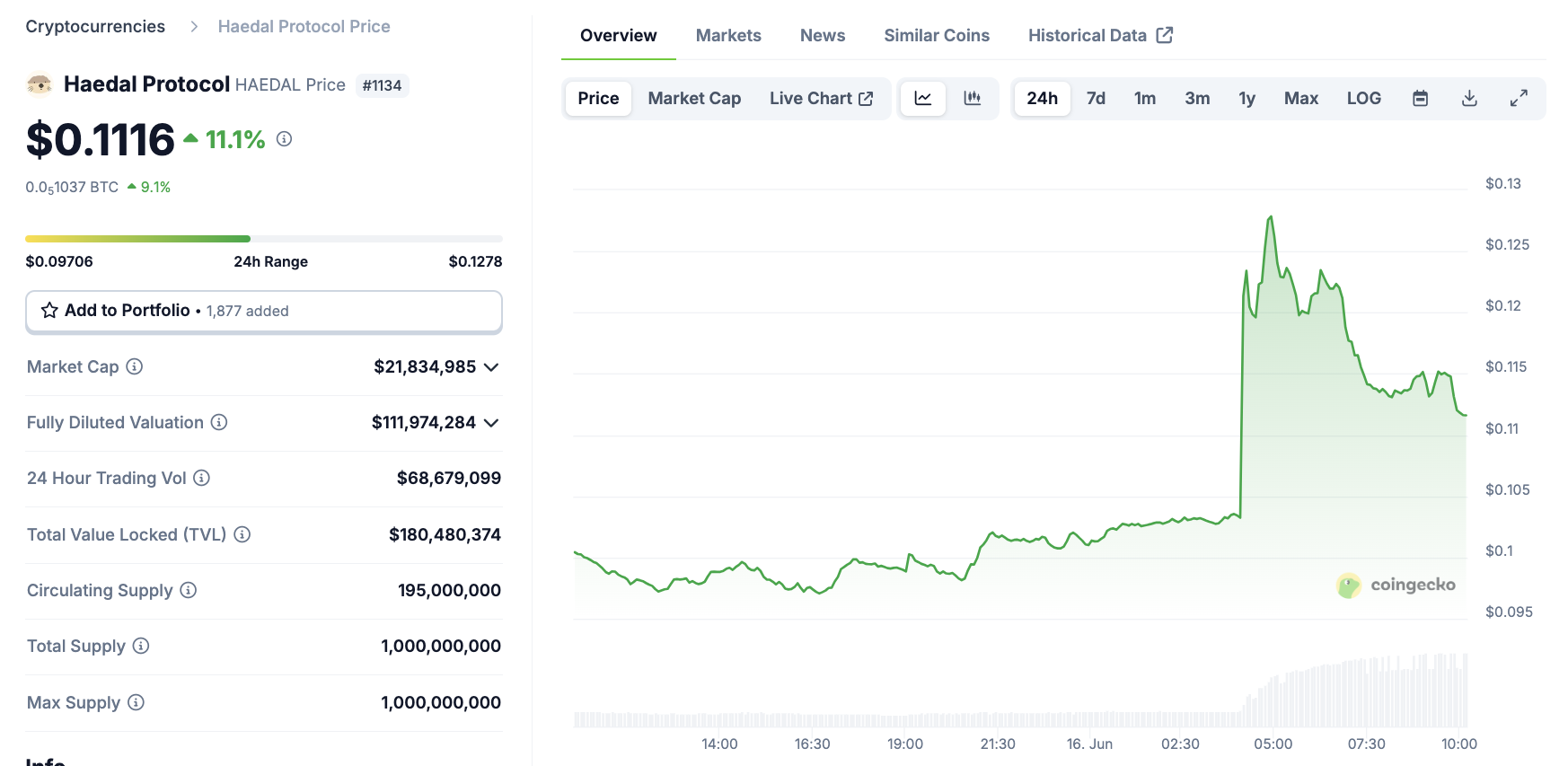
The price of Cardano has managed to stay resilient as market volatility has continued to grow, riding on new signals for ADA bulls to drive growth. Cardano has remained on the horizon over the past few weeks as it locked in to retail its ranking as the 10th largest cryptocurrency.
With technical indicators showing a potential rebound, such as the golden cross metric, the question remains whether the ADA price can break out of its current consolidation.
ADA and Mission With Market Bulls
Cardano’s price was $0.6282 at the time of writing, up marginally by 0.64% in 24 hours. ADA bounced back from a low of $0.6197 to a high of $0.6340 to extend its ongoing consolidation.
Despite this close trading range, the asset’s price will likely benefit from the positive shift in Open Interest. This metric, as measured by CoinGlass data, has jumped by over 4% in the past 1 hour, a visible change in direction.
With this short-term shift, the total funds committed to ADA in the market are now pegged at 1 billion, worth over $629 million. Open Interest is a key metric that depicts the total value of contracts opened in the derivatives market. The bigger this figure in dollar terms, the more likely a trend shift is.
This current adoption boost has placed the ADA price in the spotlight. With speculation growing on whether the ADA price could hit $3 or higher levels, commitment in the derivatives market can reshape sentiment.
Cardano Price and Golden Cross Setup
Over the past 7 days, the price of the top altcoin, now capped below the $0.6677 resistance level. However, this will change if the current Golden Cross formation plays out.

Per the ADA/USDT daily chart, two major indicators are flashing unique signals that must be watched closely. The Awesome Oscillator is still reading negative, a sign that, though bears remain in control, the excessive selloff might be thinning out.
The Golden Cross, on the other hand, is on the verge of a breakout. The short-term or 9-day Moving Average is about to exceed the long-term or 21-day moving average. If this trend materializes, the Cardano price breakout will be confirmed.
With this signal, an ADA price analysis that teased $4 may be possible despite recent whale selloffs.
Cardano In the News
Amid the sustained dynamic trends in the crypto market today, ADA has remained in the spotlight over the past week.
As reported by CoinGape, the long-anticipated Cardano-Bitcoin staking is likely to become a reality soon. This is a major complement to the growing list of ADA ETF products now filed with the Securities and Exchange Commission (SEC).
If approved alongside other altcoin ETFs, it might usher in another era of institutional adoption for Cardano, setting the coin up for price breakout.
The post Cardano Bulls Secure Most Important Signal To Drive Price Rally appeared first on CoinGape.






 Pro tips: Use
Pro tips: Use 



